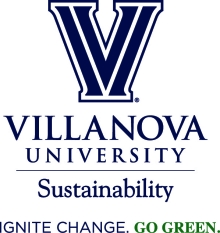Sustainable development is development that meets the needs of the present without compromising the ability of future generations to meet their own needs
Key Terms in Sustainability
Integrating Sustainability Into the Curriculum
Sustainability can be integrated into a vast array of subjects, and the content that is included can change based on the context. However, how sustainability is taught is just as important as what is taught. Here are some general tips for incorporating discussions of sustainability into any classroom.
Avoid overload and excess negativity. The rhetoric surrounding sustainability issues often focus on the urgency and immensity of issues facing the planet. Such overload of negativity can leave students feeling powerless to make change, which can lead to disengagement. For this reason, be sure to include examples of success stories, and consider breaking issues down into more manageable pieces to be examined.
- A great tool to help with this is Solutions U, which pulls positive sustainability related new stories from across the globe and news outlets. Educators can create an account to access pre-made story collections with new stories, overview descriptions and discussion questions around a given topic. Users can also design their own story collections, pulling news stories from Solutions U or any other online source, draft your own overview and discussion questions.
Embrace the interdisciplinary nature of sustainability. A thorough understanding of the connectivity of issues across aspects of natural sciences, social sciences and humanities helps to contextualize the issues. This can be a challenge, as it can lead to discussions that fall outside of an instructor’s area of expertise. Consider the resources available as part of the campus community through efforts like team teaching with colleagues from another discipline or organizing guest lecturers from the campus or local community.
Be careful with eco-rhetoric. Eco-rhetoric can be ambiguous and confusing for people who are new to the terminology. Establishing a definition in the context of any given subject can help to remove any ambiguity from in-class discussion. Consider the conflicting ways in which terms like “sustainability” and “environmentalism” have been used historically, and promote critical examination of such terms.
Incorporate primary data into lesson plans. Allowing students to struggle with empirical data, rather than providing them with an analysis, empowers students to understand the strengths and limitations of current data. It may also help them gain greater insight into how relevant scientific conclusions have been drawn.
- Climate Data- The World Bank has graphed trends for a variety of data sets, including emissions data and population density.
- Sustainable Development Goals- SDG Report is an interactive map of progress for each SDG
- Population Data- This UN site graphs population pyramids for global populations, with over a century's worth of data.
- Opinion Data- These Yale Opinion maps show American’s perceptions on climate change risks, broken down at the state, congressional district, metro area, and county level.
- Water Data- This Our World in Data page contains maps that demonstrate areas of water stress as well as freshwater resources over time, etc.
- Food Systems Data- Check out the Our World in Data page for a visual representation of the land use, carbon emissions, and more associated with global food production.
- Energy Data-The US Energy Information Administration provides energy data from the US broken down by end use and energy source type. For more global data, see this page from Our World in Data.
- Economic Data-This map-based data from Stanford University shows the projected impact of climate change on economies by country.
Pedagogy Styles that Aid Sustainability Teaching








